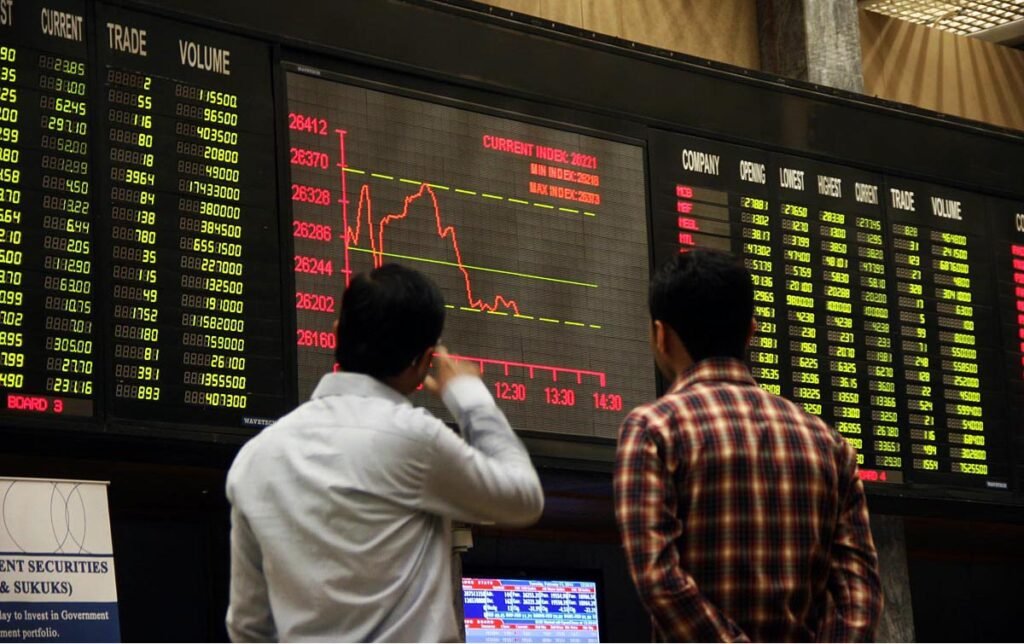
KARACHI, PAKISTAN — The Pakistan Stock Exchange (PSX) experienced a volatile trading session on Tuesday, ultimately closing in negative territory despite briefly crossing the 137,000 mark during intra-day trading.
The benchmark KSE-100 index initially gained strong momentum, rising by 1,237.03 points or 0.91% to reach 137,739.56 points by 11:39 AM. However, the gains could not be sustained, and the index reversed course to close at 135,939.87, marking a decline of 562.66 points or 0.41% from the previous session’s close of 136,502.53.
The trading day began positively, with the index climbing 1,205.1 points or 0.88% to touch 137,707.63 at 9:45 AM. However, by 10:15 AM, it had dipped to 136,498.16 points before briefly regaining strength.
According to Samiullah Tariq, Head of Research at Pakistan Kuwait Investment Company, the early gains were driven by improved macroeconomic indicators and optimism surrounding corporate earnings — particularly from commercial banks.
“Better macro indicators and expectations of strong quarterly results pushed the market up in early trading,” he said.
However, Awais Ashraf, Director of Research at AKD Securities, attributed the afternoon downturn to profit-taking by investors in stocks that had seen significant gains during the recent bull run.
“Lack of clarity around circular debt payments continues to weigh on energy stocks,” Ashraf noted. He added that the broader rally is likely to resume due to attractive stock valuations and hopes for further monetary easing.
The PSX had been on a steady upward trajectory in recent weeks, driven by value-hunting, robust corporate earnings, and renewed investor confidence.
Strong participation from local mutual funds and institutional investors, combined with supportive economic indicators, had propelled the index to new highs.
Key macroeconomic factors included a record rise in workers’ remittances, reaching $3.4 billion in June, an 8% increase year-on-year. This brought full-year FY25 remittances to $38.3 billion, a 27% surge from the previous year.
Additionally, the State Bank of Pakistan’s (SBP) foreign exchange reserves rose by $1.8 billion, reaching $14.5 billion — the highest level in 39 months.
Despite Tuesday’s dip, analysts remain broadly optimistic about the market’s long-term trajectory, citing strong fundamentals, improving external accounts, and the potential for a monetary policy shift as key supports for continued investor interest.

